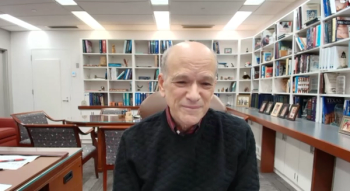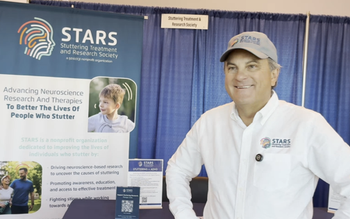
45,000 More Psychiatrists, Anyone?
Houston, we have a problem. There is a critical shortage of psychiatrists.
Houston, we have a problem. There is a critical shortage of psychiatrists. And the problem is not in Houston alone--it includes the entire state of Texas, and in fact every other state in the union (Mid-town Manhattan, Boston’s Beacon Hill, and Sacramento Street in San Francisco might be exceptions.)
According to the most recent set of studies commissioned by the government, America is shy about 45,000 psychiatrists. And the shortage will get worse, because psychiatrists are aging and many are reaching retirement age.
Before commenting on possible solutions, let’s get a better fix on where this rather astounding number comes from. After all, labor statistics are politically charged quantities because they are often used as ammunition for various stakeholders to win funding for pet programs. So it’s important to be skeptical.
In the major study by
You’ll notice some glaring omissions here, most notably schizophrenia, substance abuse, and ADHD. Why weren’t these included? Various reasons, some of them having to do with the quality of the data they had to work with. The NCSR data, oddly enough, did not include enough questions to reliably diagnose schizophrenia, so the researchers decided they could not come up with reliable prevalence numbers for schizophrenia. What about substance abuse? While the NCSR data included substance abuse, there is little reliable data on how many substance abuse clinicians are out there, so they omitted this diagnosis from their analysis. And then there were a range of diagnoses the authors considered not serious enough to include, such as ADHD, conduct disorder, oppositional defiant disorder, dysthymia, and a few others.
The bottom line is that given the exclusion of multiple patients with disorders requiring some treatment, the study results are necessarily very conservative. Whatever shortage of services they discover will need to be amplified to some degree to make up for these missing patients. Nonetheless, using their particularly strict and conservative criteria, they estimated that the one year prevalence of “serious mental illness” in the U.S. is 3.9%. This estimate is very close to other recent estimates of the prevalence of significant disabling mental illness.
So how much mental health treatment do these patients need? Using more data from NCSR, the researchers stated that “about half of adults with serious mental illness used services; they typically spent 10.54 hours per year (CI=5.46–15.63) with nonprescriber mental health professionals and 4.38 hours per year (CI=3.40–5.37) with primary care physicians or prescriber mental health professionals.” Do these numbers sound right? Essentially they are saying that patients with serious mental illness have about 1 therapy visit per month, and about 20 minutes per month of psychopharm-oriented visits with some prescriber. It sounds fairly realistic as an average, considering that some “stable” patients probably never see a therapist and just see their psychiatrist every 3 months or so for a med refill, while on the other end of the spectrum there are very ill patients who have at least weekly therapy sessions and biweekly psychopharm visits.
So how many providers are needed? Now that the researchers had estimated the number of patients with mental illness, the number of hours of care needed on average by each patient, and the amount of care provided by the average full time clinician (I won’t bore you with how they got that statistic), they could calculate the bottom line--how many clinicians does the U.S. need to treat its mentally ill citizens? They estimated that we need 25.9 psychiatrists per 100,000. This is an average number, which varies by county- - typically, poorer people need more psychiatric time, so the need is greater in poorer counties.
The problem is, we only have about 9/100,000 practicing full time psychiatrists in the U.S., or about 30,000 total. That’s 15/100,000 too few, and assuming a population of about 300 million (our population is actually about 309 million right now, but we’ll round down), we arrive at the estimated shortage of 45,000 psychiatrists.
So--what are we going to do to solve this problem? I’m not sure, but here are the options often proposed.
1. Let’s get the primary care doctors to absorb all our excess patients. Sorry, but as family practitioner and writer Michael Victoroff once told me, “that donkey is overloaded already.” PCPs are dealing with longer wait lists than psychiatrists and they are coping with a vast array of illnesses to manage. Plus, outcomes research has shown that PCPs don’t generally do a great job treating psychiatric problems (though there are many exceptions here and there). How could they? All they have time to do is to hand out a pill and refer to a therapist or a psychiatrist. And the psychiatrist will often be either unavailable or will refuse the patient’s insurance.
2. Let’s churn out more psychiatrists. That means expanding residency programs. But guess who pays for residents? Medicare, and the going rate is about $100,000 per residency slot. Is Medicare planning to shell out 45,000 X $100,000 = $4.5 billion to solve the mental health access problem? Not on your life. Most residency directors feel lucky if they can hold on to the reimbursed slots they have now, much less dreaming for more.
3. Let’s train more advanced practice nurses and PAs. That might work over the long term, because the economics are more feasible. NP training is shorter and cheaper, their incomes are lower, and they typically are more likely to work for underserved populations. One problem: They get very little training in psychology or psychotherapy. And that impacts their ability to properly diagnose and treat tough cases.
4. Let’s give medically-trained psychologists prescriptive authority. That won’t work, because the APA has marshaled millions of dollars of money they can’t afford to block this solution.
Any other ideas for solving the mental health crisis in this country? The public is expecting us to come up with something, because we’re the experts.
References:
Reference
1. Konrad TR, Ellis AR, Thomas JC, et al. County-level estimates of need for mental health professionals in the United States. Psychiatr Serv. 2009;60:1307-1314.
Newsletter
Receive trusted psychiatric news, expert analysis, and clinical insights — subscribe today to support your practice and your patients.

















